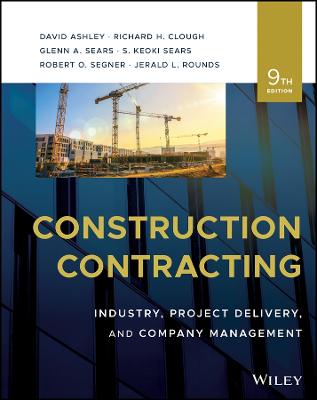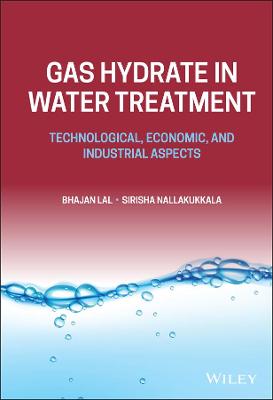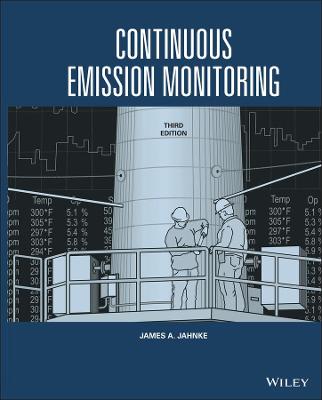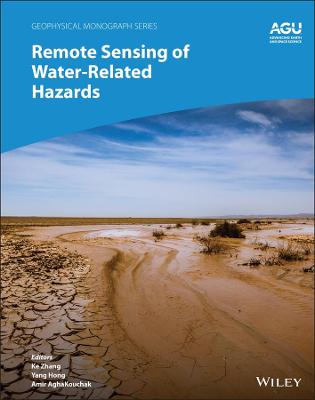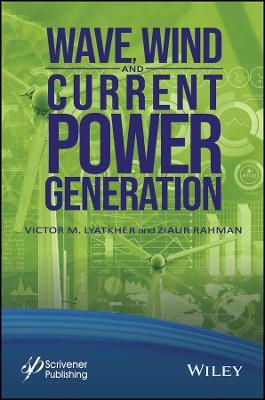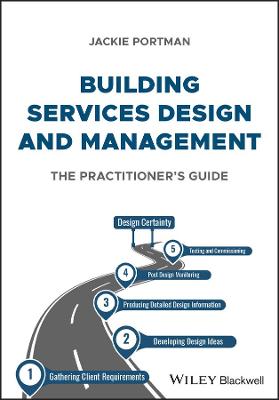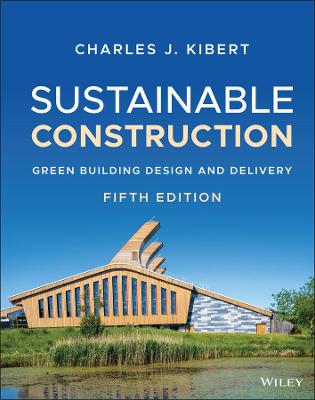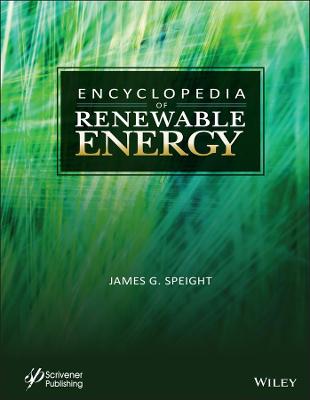Research Methods for Construction
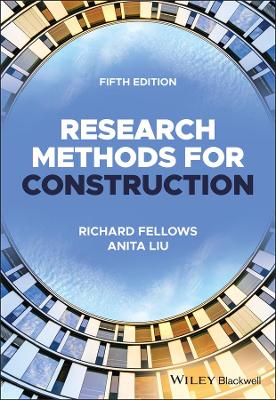 -15%
portes grátis
-15%
portes grátis
Research Methods for Construction
Fellows, Richard F.; Liu, Anita M. M.
John Wiley and Sons Ltd
12/2021
384
Mole
Inglês
9781119814733
15 a 20 dias
658
About the Authors ix
Preface to the Fifth Edition xi
Part 1 Producing a Proposal 1
1 Introduction 3
1.1 The concept of research 3
1.1.1 Research: a careful search/investigation 4
1.1.2 Research: contribution to knowledge 4
1.1.3 A learning process 6
1.1.4 Contextual factors affecting research 6
1.2 Classifications of research 7
1.2.1 Pure and applied research 7
1.2.2 Quantitative and qualitative research 8
1.2.3 Other categories of research 11
1.3 Theories and paradigms 12
1.3.1 Development of knowledge 13
1.3.2 Testing a theory 16
1.3.3 Paradigms 19
1.3.4 Positivism 20
1.3.5 Interpretivism 21
1.3.6 Pragmatism 23
1.3.7 Models and hypotheses 23
1.4 Research styles 25
1.4.1 Action research 25
1.4.2 Ethnographic research 26
1.4.3 Surveys 27
1.4.4 Case studies 28
1.4.5 Experiments 29
1.5 Quantitative and qualitative approaches 31
1.5.1 Quantitative approaches 32
1.5.2 Qualitative approaches 32
1.5.3 Triangulated studies 32
1.5.4 Data sources 33
1.6 Where to begin 35
1.7 Summary 36
References 37
2 Topic for Study 41
2.1 Selection of a topic 41
2.1.1 Resources 41
2.1.2 Subject selection 43
2.1.3 Choosing a topic 46
2.1.4 Evaluating alternatives 46
2.1.5 Refining a topic 47
2.2 Writing the proposal 48
2.2.1 Aim 49
2.2.2 Proposition 49
2.2.3 Objectives 50
2.2.4 Hypotheses 51
2.2.5 Methodology and methods 53
2.2.6 Programme 55
2.2.7 Deliverables and industrial or practitioner support 55
2.3 Summary 56
References 56
Part 2 Executing the Research 59
3 Initial Research 61
3.1 The research process 61
3.1.1 Initial phase 64
3.1.2 Data and information 66
3.1.3 Dynamic process 68
3.2 Initial search 69
3.2.1 Definitions and assumptions 71
3.2.2 Theory and literature reviews 71
3.2.3 Analysing data from a search 72
3.3 Literature based discovery 75
3.4 Assembling the theoretical framework 76
3.4.1 Theory borrowing 79
3.4.2 Theorising 83
3.5 Philosophy and paradigms 84
3.5.1 Ontology, epistemology, and axiology 86
3.5.2 Positivism 88
3.5.3 Realism 89
3.5.4 Interpretivism 91
3.5.5 Constructivism 92
3.5.6 Phenomenalism 93
3.5.7 Postmodernism 95
3.5.8 Pragmatism 96
3.6 Fuzzy thinking 96
3.7 Theoretical models and constructs 97
3.7.1 Theoretical model 98
3.7.2 Constructs 100
3.8 Proper referencing 101
3.9 Summary 103
Notes 104
References 104
4 Approaches to Empirical Work 110
4.1 Starting data collection 110
4.2 Experience 111
4.3 Reasoning and inference 112
4.3.1 Sensemaking 114
4.3.2 Motivated reasoning 115
4.3.3 Determinism and stochasticism 117
4.3.4 Complexity 119
4.4 Systems of methods 122
4.5 Research design 123
4.5.1 Context 126
4.5.2 Variance and errors 126
4.5.3 Empiricism, rationalism, and verification 127
4.6 Qualitative and quantitative approaches 129
4.6.1 When are qualitative approaches employed? 130
4.6.2 When are quantitative approaches employed? 134
4.7 Experimental 135
4.7.1 Experiments and quasi-experiments 135
4.7.2 Variables 138
4.7.3 Experimental control 141
4.7.4 Replication 142
4.7.5 Between-subjects design (simple randomised experiments) 143
4.7.6 Between-subjects design (matched randomised groups) 143
4.7.7 Within-subject design (repeated measure design) 144
4.7.8 Factorial experiments 145
4.8 Survey 145
4.9 Secondary 147
4.9.1 Archival 149
4.9.2 Meta-analysis 150
4.10 Case study 151
4.11 Ethnographic 155
4.11.1 Ethnography 156
4.11.2 Ethnomethodology 158
4.12 Action 158
4.13 Grounded theory (development of theory from data) 159
4.14 Narrative 162
4.15 Modelling 163
4.15.1 Classification of models 163
4.15.2 Deterministic and stochastic models 164
4.15.3 The modelling process 165
4.16 Simulation 166
4.16.1 Dynamism 166
4.16.2 Heuristics 166
4.16.3 Approaches 167
4.17 Level of research 168
4.18 Practice-based research 171
4.19 Summary 175
References 176
5 Hypotheses 182
5.1 Essentials of a valid hypothesis 182
5.2 Roles of hypotheses 185
5.3 Objective testing of hypotheses 187
5.4 Role of sampling 188
5.5 Common statistical measures 191
5.5.1 Normal distribution 196
5.6 Null hypotheses 198
5.7 Validities 199
5.8 Summary 202
References 202
6 Data Collection 204
6.1 Data requirements 204
6.2 Sources of quantitative data 207
6.3 Collecting data from respondents 210
6.3.1 Questionnaires 213
6.3.2 Interviews 215
6.4 Case studies 218
6.5 Triangulation 218
6.6 Sampling 219
6.6.1 Sample size 223
6.7 Scales of measurement 227
6.7.1 Scaling techniques (non-metric and metric) 229
6.7.2 Non-comparative (metric) scales 229
6.7.3 Comparative (non-metric) scales 230
6.7.4 Common scaling methods 231
6.7.5 Development of multi-item scales 233
6.8 Obtaining data 235
6.9 Translation 243
6.10 Response styles and biases 244
6.11 Summary 246
References 247
7 Data Analysis 251
7.1 Analysing data 251
7.2 Plotting data 256
7.3 Statistical methods 260
7.4 Non-parametric tests 261
7.4.1 Sign test 261
7.4.2 Rank-sum tests 262
7.4.3 Chi-square (??2) test 266
7.4.4 Goodness of fit 267
7.5 Parametric tests 267
7.5.1 t-Test 268
7.5.2 Analysis of variance (ANOVA) 268
7.5.3 Regression and correlation 271
7.5.4 Multiple regression 276
7.5.5 Time series 277
7.5.6 Index numbers 282
7.5.7 Simple average index 283
7.5.8 Chained index 287
7.6 Other analytical techniques 289
7.6.1 Cluster analysis 289
7.6.2 Factor analysis 290
7.6.3 Path analysis 292
7.6.4 Analytic hierarchy process (AHP) 295
7.7 Analysis of qualitative data 296
7.7.1 Analysing documents (from texts) 297
7.7.2 Conversation analysis 299
7.7.3 Discourse analysis 300
7.7.4 Social network analysis 301
7.7.5 Multi-level research 303
7.7.6 Meta-analysis 304
7.7.7 Longitudinal research 304
7.8 Summary 305
References 306
8 Ethics in Research 310
8.1 The concepts of morals and ethics 310
8.2 Research ethics 314
8.2.1 Theory and literature 317
8.2.2 Data collection, use, and disposal 318
8.3 Data analysis, intellectual property, and data protection 320
8.3.1 Data analysis, results, and reporting 320
8.3.2 Intellectual property 322
8.3.3 Data protection 322
8.4 Equality, diversity, and inclusion 323
8.5 Summary 327
References 328
Part 3 Reporting the Results 331
9 Results, Inferences, and Conclusions 333
9.1 Requirements for valid results 333
9.2 Potential sources of error 334
9.3 Reliability 335
9.4 Results 336
9.4.1 Producing the results 336
9.4.2 Introductory results 337
9.4.3 Substantive results 338
9.4.4 Inferences 339
9.4.5 Causal relationships 340
9.4.6 Interpretation 341
9.5 Conclusions 345
9.5.1 How to write conclusions 345
9.5.2 Further research 347
9.6 Summary 347
References 348
10 Reports and Presentations 349
10.1 Report production 349
10.2 Communication 350
10.3 Contents of the report 352
10.3.1 How to begin 352
10.3.2 Text of the report 353
10.3.3 Theory and literature 354
10.3.4 Reporting on methodology and methods 356
10.3.5 Reporting on data sourcing and data collection 356
10.3.6 Presentation of results 357
10.3.7 Discussion of results 358
10.3.8 Conclusions 358
10.3.9 Limitations 359
10.3.10 Recommendations 359
10.3.11 Introduction 360
10.3.12 Remainder of the report 360
10.4 Oral presentation 361
10.5 Summary 362
References 362
Index 363
About the Authors ix
Preface to the Fifth Edition xi
Part 1 Producing a Proposal 1
1 Introduction 3
1.1 The concept of research 3
1.1.1 Research: a careful search/investigation 4
1.1.2 Research: contribution to knowledge 4
1.1.3 A learning process 6
1.1.4 Contextual factors affecting research 6
1.2 Classifications of research 7
1.2.1 Pure and applied research 7
1.2.2 Quantitative and qualitative research 8
1.2.3 Other categories of research 11
1.3 Theories and paradigms 12
1.3.1 Development of knowledge 13
1.3.2 Testing a theory 16
1.3.3 Paradigms 19
1.3.4 Positivism 20
1.3.5 Interpretivism 21
1.3.6 Pragmatism 23
1.3.7 Models and hypotheses 23
1.4 Research styles 25
1.4.1 Action research 25
1.4.2 Ethnographic research 26
1.4.3 Surveys 27
1.4.4 Case studies 28
1.4.5 Experiments 29
1.5 Quantitative and qualitative approaches 31
1.5.1 Quantitative approaches 32
1.5.2 Qualitative approaches 32
1.5.3 Triangulated studies 32
1.5.4 Data sources 33
1.6 Where to begin 35
1.7 Summary 36
References 37
2 Topic for Study 41
2.1 Selection of a topic 41
2.1.1 Resources 41
2.1.2 Subject selection 43
2.1.3 Choosing a topic 46
2.1.4 Evaluating alternatives 46
2.1.5 Refining a topic 47
2.2 Writing the proposal 48
2.2.1 Aim 49
2.2.2 Proposition 49
2.2.3 Objectives 50
2.2.4 Hypotheses 51
2.2.5 Methodology and methods 53
2.2.6 Programme 55
2.2.7 Deliverables and industrial or practitioner support 55
2.3 Summary 56
References 56
Part 2 Executing the Research 59
3 Initial Research 61
3.1 The research process 61
3.1.1 Initial phase 64
3.1.2 Data and information 66
3.1.3 Dynamic process 68
3.2 Initial search 69
3.2.1 Definitions and assumptions 71
3.2.2 Theory and literature reviews 71
3.2.3 Analysing data from a search 72
3.3 Literature based discovery 75
3.4 Assembling the theoretical framework 76
3.4.1 Theory borrowing 79
3.4.2 Theorising 83
3.5 Philosophy and paradigms 84
3.5.1 Ontology, epistemology, and axiology 86
3.5.2 Positivism 88
3.5.3 Realism 89
3.5.4 Interpretivism 91
3.5.5 Constructivism 92
3.5.6 Phenomenalism 93
3.5.7 Postmodernism 95
3.5.8 Pragmatism 96
3.6 Fuzzy thinking 96
3.7 Theoretical models and constructs 97
3.7.1 Theoretical model 98
3.7.2 Constructs 100
3.8 Proper referencing 101
3.9 Summary 103
Notes 104
References 104
4 Approaches to Empirical Work 110
4.1 Starting data collection 110
4.2 Experience 111
4.3 Reasoning and inference 112
4.3.1 Sensemaking 114
4.3.2 Motivated reasoning 115
4.3.3 Determinism and stochasticism 117
4.3.4 Complexity 119
4.4 Systems of methods 122
4.5 Research design 123
4.5.1 Context 126
4.5.2 Variance and errors 126
4.5.3 Empiricism, rationalism, and verification 127
4.6 Qualitative and quantitative approaches 129
4.6.1 When are qualitative approaches employed? 130
4.6.2 When are quantitative approaches employed? 134
4.7 Experimental 135
4.7.1 Experiments and quasi-experiments 135
4.7.2 Variables 138
4.7.3 Experimental control 141
4.7.4 Replication 142
4.7.5 Between-subjects design (simple randomised experiments) 143
4.7.6 Between-subjects design (matched randomised groups) 143
4.7.7 Within-subject design (repeated measure design) 144
4.7.8 Factorial experiments 145
4.8 Survey 145
4.9 Secondary 147
4.9.1 Archival 149
4.9.2 Meta-analysis 150
4.10 Case study 151
4.11 Ethnographic 155
4.11.1 Ethnography 156
4.11.2 Ethnomethodology 158
4.12 Action 158
4.13 Grounded theory (development of theory from data) 159
4.14 Narrative 162
4.15 Modelling 163
4.15.1 Classification of models 163
4.15.2 Deterministic and stochastic models 164
4.15.3 The modelling process 165
4.16 Simulation 166
4.16.1 Dynamism 166
4.16.2 Heuristics 166
4.16.3 Approaches 167
4.17 Level of research 168
4.18 Practice-based research 171
4.19 Summary 175
References 176
5 Hypotheses 182
5.1 Essentials of a valid hypothesis 182
5.2 Roles of hypotheses 185
5.3 Objective testing of hypotheses 187
5.4 Role of sampling 188
5.5 Common statistical measures 191
5.5.1 Normal distribution 196
5.6 Null hypotheses 198
5.7 Validities 199
5.8 Summary 202
References 202
6 Data Collection 204
6.1 Data requirements 204
6.2 Sources of quantitative data 207
6.3 Collecting data from respondents 210
6.3.1 Questionnaires 213
6.3.2 Interviews 215
6.4 Case studies 218
6.5 Triangulation 218
6.6 Sampling 219
6.6.1 Sample size 223
6.7 Scales of measurement 227
6.7.1 Scaling techniques (non-metric and metric) 229
6.7.2 Non-comparative (metric) scales 229
6.7.3 Comparative (non-metric) scales 230
6.7.4 Common scaling methods 231
6.7.5 Development of multi-item scales 233
6.8 Obtaining data 235
6.9 Translation 243
6.10 Response styles and biases 244
6.11 Summary 246
References 247
7 Data Analysis 251
7.1 Analysing data 251
7.2 Plotting data 256
7.3 Statistical methods 260
7.4 Non-parametric tests 261
7.4.1 Sign test 261
7.4.2 Rank-sum tests 262
7.4.3 Chi-square (??2) test 266
7.4.4 Goodness of fit 267
7.5 Parametric tests 267
7.5.1 t-Test 268
7.5.2 Analysis of variance (ANOVA) 268
7.5.3 Regression and correlation 271
7.5.4 Multiple regression 276
7.5.5 Time series 277
7.5.6 Index numbers 282
7.5.7 Simple average index 283
7.5.8 Chained index 287
7.6 Other analytical techniques 289
7.6.1 Cluster analysis 289
7.6.2 Factor analysis 290
7.6.3 Path analysis 292
7.6.4 Analytic hierarchy process (AHP) 295
7.7 Analysis of qualitative data 296
7.7.1 Analysing documents (from texts) 297
7.7.2 Conversation analysis 299
7.7.3 Discourse analysis 300
7.7.4 Social network analysis 301
7.7.5 Multi-level research 303
7.7.6 Meta-analysis 304
7.7.7 Longitudinal research 304
7.8 Summary 305
References 306
8 Ethics in Research 310
8.1 The concepts of morals and ethics 310
8.2 Research ethics 314
8.2.1 Theory and literature 317
8.2.2 Data collection, use, and disposal 318
8.3 Data analysis, intellectual property, and data protection 320
8.3.1 Data analysis, results, and reporting 320
8.3.2 Intellectual property 322
8.3.3 Data protection 322
8.4 Equality, diversity, and inclusion 323
8.5 Summary 327
References 328
Part 3 Reporting the Results 331
9 Results, Inferences, and Conclusions 333
9.1 Requirements for valid results 333
9.2 Potential sources of error 334
9.3 Reliability 335
9.4 Results 336
9.4.1 Producing the results 336
9.4.2 Introductory results 337
9.4.3 Substantive results 338
9.4.4 Inferences 339
9.4.5 Causal relationships 340
9.4.6 Interpretation 341
9.5 Conclusions 345
9.5.1 How to write conclusions 345
9.5.2 Further research 347
9.6 Summary 347
References 348
10 Reports and Presentations 349
10.1 Report production 349
10.2 Communication 350
10.3 Contents of the report 352
10.3.1 How to begin 352
10.3.2 Text of the report 353
10.3.3 Theory and literature 354
10.3.4 Reporting on methodology and methods 356
10.3.5 Reporting on data sourcing and data collection 356
10.3.6 Presentation of results 357
10.3.7 Discussion of results 358
10.3.8 Conclusions 358
10.3.9 Limitations 359
10.3.10 Recommendations 359
10.3.11 Introduction 360
10.3.12 Remainder of the report 360
10.4 Oral presentation 361
10.5 Summary 362
References 362
Index 363

